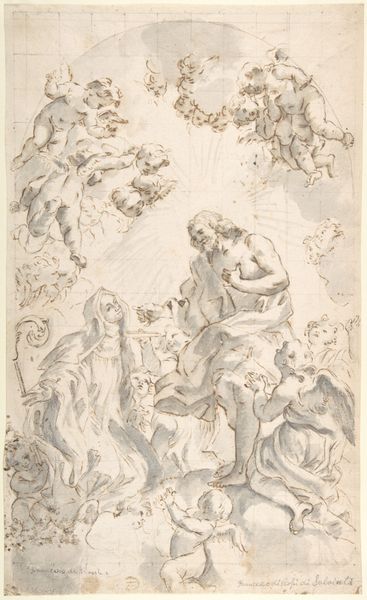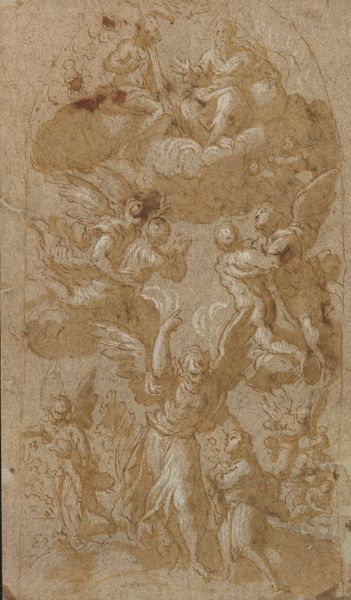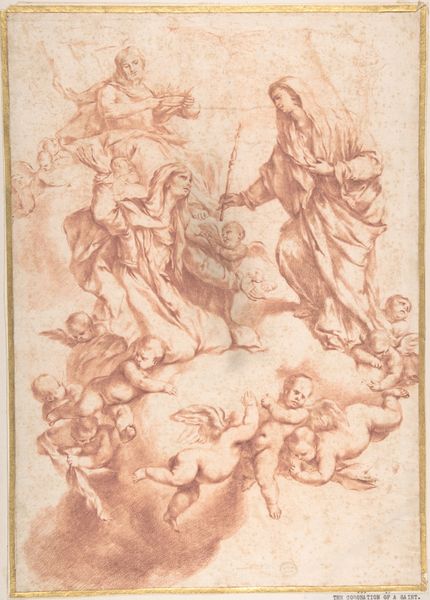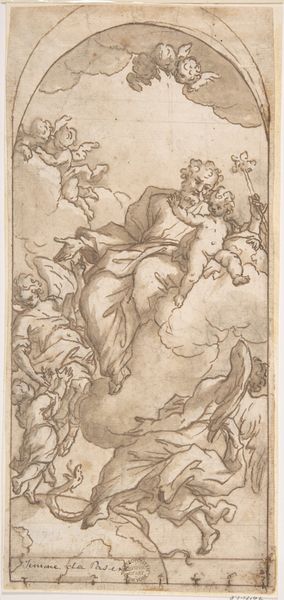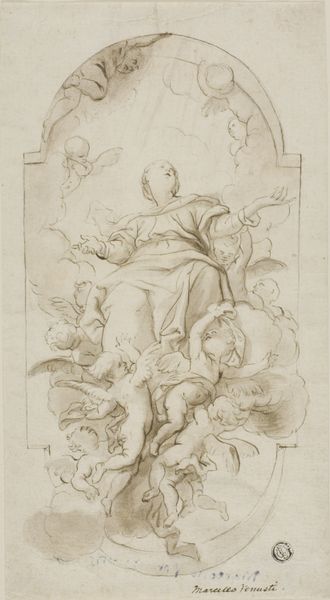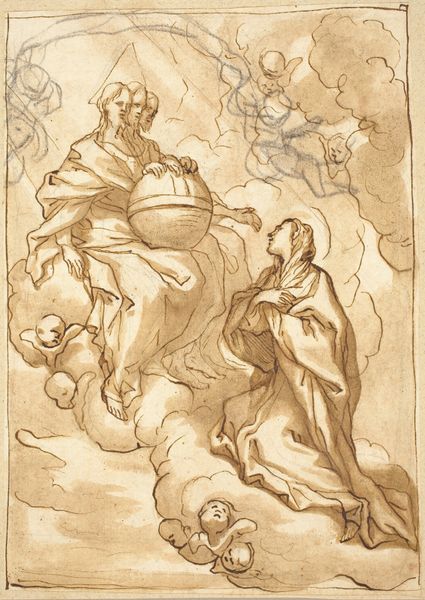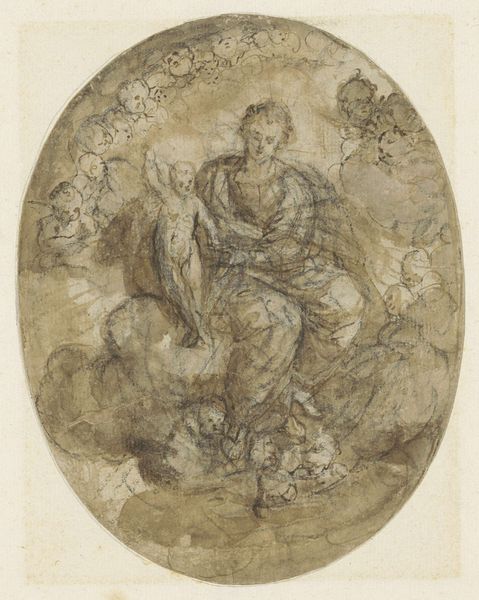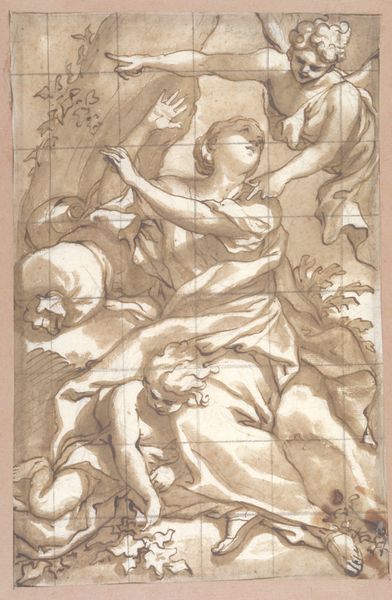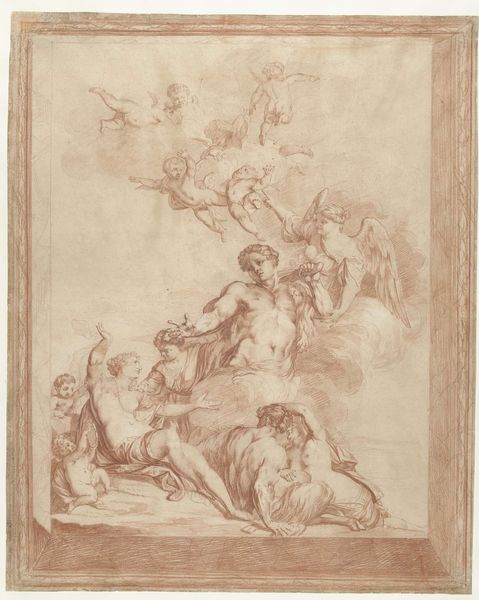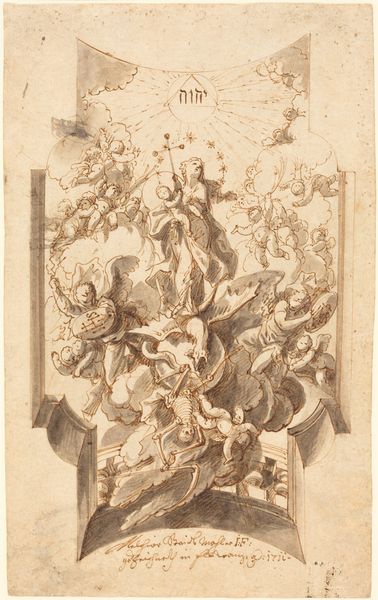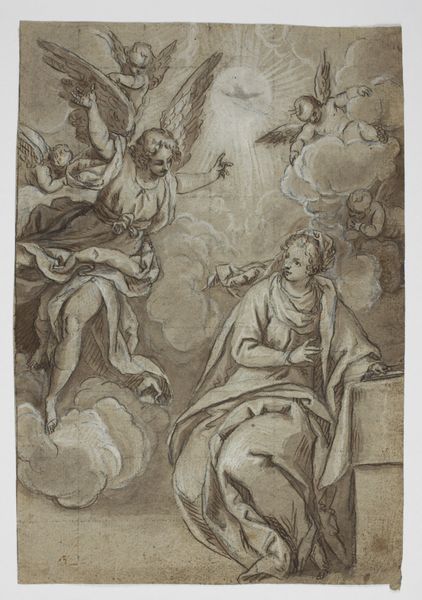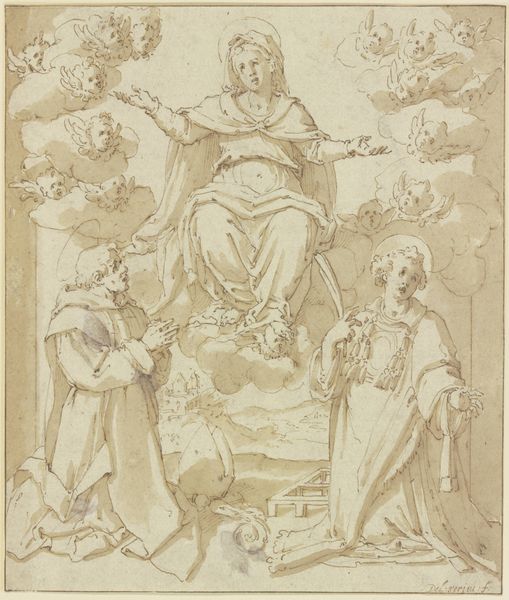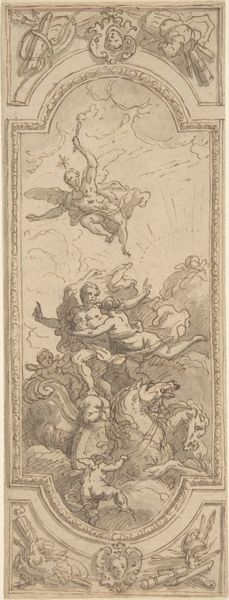
drawing, print, paper, ink, chalk, black-chalk
#
drawing
#
baroque
# print
#
figuration
#
paper
#
ink
#
coloured pencil
#
chalk
#
water
#
watercolour illustration
#
history-painting
#
black-chalk
Dimensions: 298 × 193 mm
Copyright: Public Domain
Editor: We’re looking at Domenico Piola’s "Assumption of the Virgin," date unknown, rendered in ink and chalk on paper. The brown monochrome gives it a humble feeling, almost like a preliminary sketch. What strikes you about this piece? Curator: The materiality speaks volumes. The combination of ink and chalk—easily sourced, readily available—suggests a work rooted in practicality, maybe destined for the print shop rather than the palace. The lack of color pushes us to consider the lines, the labor involved in their creation. Were these mass-produced, democratizing religious iconography, or a luxury item for a select few? Editor: I see. So, it’s less about the religious scene itself and more about how it was made and disseminated? Curator: Precisely. The medium *is* the message, in this case. Think about the social implications. Was Piola's workshop producing these images like an assembly line? What were the working conditions? Were apprentices involved in the less skilled tasks, such as preparing the paper or mixing inks? We have to think about labor practices here. Editor: That makes me look at the clouds differently now. They aren’t just clouds; they're a product of labor, shaped by specific tools and techniques. Curator: Indeed. The rapid, fluid strokes contrast sharply with the more detailed rendering of the figures. This difference could reflect the division of labor, the varying skill levels within the workshop, even economic constraints influencing material choices and time allocation. Consider who had access to this imagery and at what cost. Editor: I never thought about religious art in terms of material and production. This gives me a totally fresh perspective! Curator: Exactly. By analyzing the materiality and production, we shift from purely aesthetic appreciation to a deeper understanding of the artwork's place within the socio-economic fabric of its time.
Comments
No comments
Be the first to comment and join the conversation on the ultimate creative platform.
